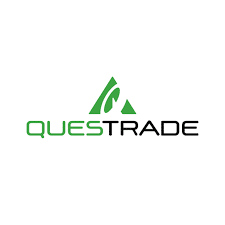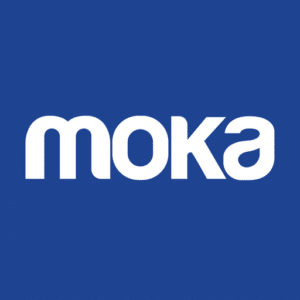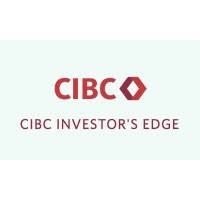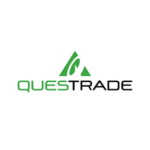Top 7 Best Investment Apps in Canada 2025

Adam Woodhead
Co-Founder
Adam is a Co-Founder and content creator for The Investors Centre. His key areas of interest and expertise are cryptocurrency and blockchain technology.
Twitter ProfileAuthor Bio

Thomas Drury
Co-Founder
Seasoned finance professional with 10+ years' experience. Chartered status holder. Proficient in CFDs, ISAs, and crypto investing. Passionate about helping others achieve financial goals.
Twitter ProfileAuthor Bio
Fact Checked
How we test
At The Investors Centre, we pride ourselves on our rigorous fact-checking process. To delve deeper into our meticulous testing procedures and discover how we ensure accuracy and reliability, visit our dedicated page on how we test.
Risk Warning
General Disclaimer
Cryptocurrency trading involves significant risks, including the potential loss of your entire investment. Prices can be highly volatile, and past performance is not indicative of future results. Please consider your financial situation, risk tolerance, and seek independent financial advice before engaging in cryptocurrency trading.
Affiliate Disclosure
This page contains affiliate links, meaning we may earn a commission if you click through and sign up with one of our partners. This does not influence our reviews or rankings, which are based on our honest opinions and thorough research.
Updated 12/03/2025
Investing has never been easier, thanks to the rise of user-friendly trading apps that put the stock market at your fingertips. Whether you’re a beginner looking for a simple, commission-free platform or an active trader seeking advanced research tools, there’s an app tailored to your needs.
In this guide, we’ll break down the best investment apps in Canada for 2025, comparing key features like fees, ease of use, market access, and customer support. We’ll also explore user reviews, security features, and pros and cons, helping you make an informed choice.
From Wealthsimple Trade’s zero-commission model to Questrade’s low-cost ETF trades and Questwealth’s automated portfolios, we cover the top platforms designed to suit different investment styles.
Ready to find the right app for you? Let’s dive in and explore the best ways to invest in Canada today
Quick Answer: What is the Best Investment App in Canada?
Wealthsimple is the best overall investment app in Canada for 2025, thanks to its low fees, beginner-friendly interface, and availability of ethical investing options. Whether you’re just starting or looking to diversify your portfolio, Wealthsimple has something for everyone.

Featured Investment App - Wealthsimple
- Bank-Grade Security
- CAD support
- Trusted by Canadians
- Global Recognised
Don’t invest unless you’re prepared to lose all the money you invest. This is a high-risk investment and you should not expect to be protected if something goes wrong. Take 2 mins to learn more.
What are the Top 7 Canadian Investment Apps?
- Wealthsimple – Low fees, user-friendly, and beginner-focused
- Questrade – Comprehensive tools, excellent for active investors
- Qtrade – Affordable, reliable, and full of educational tools
- Wealthsimple Self-Directed Investing – Great for DIY investors
- Questwealth (Questrade’s Robo-Advisor) – Hands-free investing with low fees
- Moka – Automated savings and investment app for small budgets
- CIBC Investor’s Edge – Reliable platform with strong customer support
How Do Investment Apps Compare in Canada?
With so many investment apps available, choosing the right one depends on your investment style, fees, and platform usability. Some apps prioritize low fees, while others offer advanced research tools or seamless banking integration.
Key Takeaways
Best for Beginners → Wealthsimple Trade offers a sleek, easy-to-use platform with zero-commission trades, though it lacks advanced tools.
Best for Active Traders → Questrade provides low-cost stock and ETF trades with advanced research features but has a learning curve.
Best for Education-Focused Investors → Qtrade combines a user-friendly interface with strong educational resources and a demo account.
Best for Passive Investors → Questwealth automates portfolio management at a lower cost than most robo-advisors.
Best for Bank Integration → CIBC Investor’s Edge allows seamless management of banking and investing, though its interface is less modern.
Mobile vs. Desktop Trading
Some platforms, like Wealthsimple Trade and Moka, are optimized for mobile users who want a simplified, on-the-go investing experience. Others, like Questrade and Qtrade, offer more robust desktop platforms with deeper research tools and customization.
Choosing the Right Platform
If you’re just getting started, ease of use and low fees may be the priority. For active traders, advanced tools and support options make a difference. Consider what matters most to you—whether it’s cost, features, or convenience—before making a decision.
Here’s a table summarising key features to help you decide:
| Rank | Platform | Best For | Fees | Assets Offered | Ease of Use & User Interface | Customer Support |
|---|---|---|---|---|---|---|
| #1 | Wealthsimple | Beginners, Ethical Investors | $0 trading fees for stocks & ETFs; Crypto fees vary | Stocks, ETFs, Cryptocurrencies | Very intuitive; sleek, beginner-friendly mobile and web apps | Limited support via chat and email; no phone support |
| #2 | Questrade | Active Traders, DIY Investors | $4.95–$9.95 per trade; free ETF purchases | Stocks, ETFs, Mutual Funds, Options, Bonds, GICs | Moderate complexity; packed with advanced tools but requires learning curve | Strong customer support via phone, live chat, and email |
| #3 | Qtrade | Education-Focused Investors | $6.95 per trade; discounted pricing for active traders | Stocks, ETFs, Mutual Funds, Bonds, GICs | User-friendly with great educational resources and demo account | Top-rated support via phone, live chat, and email |
| #4 | Wealthsimple Self-Directed | DIY Beginners | $0 trading fees | Stocks, ETFs | Simple, beginner-friendly platform, but fewer advanced tools | Limited support, mostly email-based |
| #5 | Questwealth | Passive Investors | 0.25–0.35% annual fees (lower than most robo-advisors) | ETFs | Easy setup, fully automated investing experience | Decent support via chat and phone, but lacks 24/7 availability |
| #6 | Moka | Small Budget Investors | $3.99 monthly fee | ETFs | Hands-free, automated investing with round-up features | Minimal support via email only |
| #7 | CIBC Investor’s Edge | Bank Integration Users | $6.95 per trade; lower for high-volume traders | Stocks, ETFs, Mutual Funds | Moderate usability; integrates well with CIBC banking but lacks modern UI | Good support, includes phone, chat, and in-branch help |
The 7 Best Investment Apps in Canada:

#1 Wealthsimple – Low fees, user-friendly, and beginner-focused
Why Do We Recommend It?
I started with Wealthsimple because of its zero-fee trades for stocks and ETFs. It felt like a safe choice as a beginner, and their ethical investing options resonated with me. Their customer support even walked me through setting up my first TFSA.
The platform’s design is clean and intuitive. I was surprised by how quickly I could open an account and start investing. The mobile app is equally impressive and makes tracking investments effortless.
| Fee Type | Cost | Details | |||
|---|---|---|---|---|---|
| Account Fees | $0 | No account minimum | |||
| Trading Fees | $0 for stocks | FX fee applies for US trades | |||
| Robo-Advisor Fees | 0.5% annual | Includes automatic rebalancing |
| Asset Class | Available? | Details | |||
|---|---|---|---|---|---|
| Stocks | Yes | Canadian and US markets | |||
| ETFs | Yes | Diverse selection, free to trade | |||
| Cryptocurrencies | Yes | Bitcoin, Ethereum, and others |
What Are the Pros & Cons?
- Zero trading fees
- Beginner-friendly
- Ethical investing options
- Limited tools for advanced traders
- No support for Foreign exchange fees for US trades or TFSA or RRSP accounts.
Don’t invest unless you’re prepared to lose all the money you invest. This is a high-risk investment and you should not expect to be protected if something goes wrong. Take 2 mins to learn more.

#2 Questrade – Comprehensive tools, excellent for active investors
Don’t invest unless you’re prepared to lose all the money you invest. This is a high-risk investment and you should not expect to be protected if something goes wrong. Take 2 mins to learn more.
Why Do We Recommend It?
When I wanted more control over my portfolio, Questrade became my go-to. Its robust tools and lower trading fees compared to banks helped me manage my RRSP effectively.
Questrade’s desktop and mobile platforms have a steeper learning curve, but the extensive tools are worth it. I’d recommend it for those ready to dive deeper into self-directed investing.
| Fee Type | Cost | Details | |||
|---|---|---|---|---|---|
| Trading Fees | $4.95–$9.95 | Competitive for Canadian brokerages | |||
| Account Fees | $0 | Requires a $1,000 minimum deposit | |||
| Mutual Fund Fees | $9.95 per trade | Applies to all mutual fund trades |
| Asset Class | Available? | Details | |||
|---|---|---|---|---|---|
| Stocks | Yes | Canadian, US, and international | |||
| ETFs | Yes | Free to buy | |||
| Options | Yes | Designed for advanced traders |
What Are the Pros & Cons?
- No trading fees
- Clean and simple interface
- Seamless transition for Wealthsimple users
- High withdrawal fees
- Not ideal for beginners

#3 Qtrade – Affordable, reliable, and full of educational tools
Don’t invest unless you’re prepared to lose all the money you invest. This is a high-risk investment and you should not expect to be protected if something goes wrong. Take 2 mins to learn more.
Why Do We Recommend It?
Qtrade impressed me with its comprehensive research tools and educational resources. When I was learning about advanced investment strategies, their platform’s resources helped me understand complex financial products.
Qtrade strikes a balance between usability and depth. While its tools are more advanced than Wealthsimple’s, it remains user-friendly enough for intermediate investors. Their responsive customer support also stands out.
| Fee Type | Cost | Details | |||
|---|---|---|---|---|---|
| Trading Fees | $6.95 per trade | Discounts for active traders | |||
| Account Fees | $0 | No account minimum for active users | |||
| Inactivity Fees | $25 quarterly | Waived with one trade per quarter |
| Asset Class | Available? | Details | |||
|---|---|---|---|---|---|
| Stocks | Yes | Domestic and international markets | |||
| ETFs | Yes | Broad selection | |||
| Mutual Funds | Yes | No-load funds available |
What Are the Pros & Cons?
- Educational resources for investors
- Competitive fees for active traders
- Excellent customer support
- Quarterly inactivity fees
- Interface less intuitive for beginners

#4 Wealthsimple Self-Directed Investing – Great for DIY investors
Don’t invest unless you’re prepared to lose all the money you invest. This is a high-risk investment and you should not expect to be protected if something goes wrong. Take 2 mins to learn more.
Why Do We Recommend It?
When I felt confident enough to take more control over my portfolio, I transitioned to Wealthsimple’s self-directed option. It offers the same user-friendly interface but with more freedom to trade without paying commissions.
It’s perfect for those transitioning from robo-advisors to DIY investing. The app’s intuitive design made my first trades simple, and I didn’t feel overwhelmed by technical charts or jargon.
| Fee Type | Cost | Details | |||
|---|---|---|---|---|---|
| Trading Fees | $0 | No commissions for stock/ETF trades | |||
| Foreign Exchange Fee | 1.50% | Applies to US trades | |||
| Account Fees | $0 | No account minimum |
| Asset Class | Available? | Details | |||
|---|---|---|---|---|---|
| Stocks | Yes | Canadian and US stocks | |||
| ETFs | Yes | Free trades | |||
| Cryptocurrencies | No | Only available via Wealthsimple Crypto |
What Are the Pros & Cons?
- Educational resources for investors
- Competitive fees for active traders
- Excellent customer support
- Limited features for advanced traders
- No mutual funds or bonds

#5 Questwealth (Questrade’s Robo-Advisor) – Hands-free investing with low fees
Don’t invest unless you’re prepared to lose all the money you invest. This is a high-risk investment and you should not expect to be protected if something goes wrong. Take 2 mins to learn more.
Why Do We Recommend It?
When I was looking for a low-cost alternative to Wealthsimple’s robo-advisor, Questwealth stood out. It offers low management fees and custom portfolios, including socially responsible options.
Setting up my account was quick, and their tailored questions created a portfolio that suited my risk tolerance. I found the performance tracking tools easy to use, which kept me motivated to invest.
| Fee Type | Cost | Details | |||
|---|---|---|---|---|---|
| Management Fees | 0.25%–0.35% | Lower than most robo-advisors | |||
| Account Fees | $0 | No account minimum | |||
| Trading Fees | N/A | Included in management fee |
| Asset Class | Available? | Details | |||
|---|---|---|---|---|---|
| ETFs | Yes | Core of all portfolios | |||
| Stocks | No | Not available directly | |||
| Bonds | Yes | Part of managed portfolios |
What Are the Pros & Cons?
- Low management fees
- Customisable portfolios
- Socially responsible options
- No direct stock trading
- Not ideal for hands-on investors

#6 Moka – Automated savings and investment app for small budgets
Don’t invest unless you’re prepared to lose all the money you invest. This is a high-risk investment and you should not expect to be protected if something goes wrong. Take 2 mins to learn more.
Why Do We Recommend It?
Moka, formerly known as Mylo, was the app that helped me start investing without noticing it. By rounding up my everyday purchases, I was saving and investing spare change effortlessly.
Moka’s hands-off approach makes it perfect for those who struggle to save. I barely noticed the small amounts being transferred, but the growth was encouraging to watch over time.
| Fee Type | Cost | Details | |||
|---|---|---|---|---|---|
| Monthly Fee | $3.99 | Flat fee for all accounts | |||
| Additional Features | $3 per month | Includes socially responsible investing |
| Asset Class | Available? | Details | |||
|---|---|---|---|---|---|
| ETFs | Yes | Core of all portfolios | |||
| Stocks | No | Not available |
What Are the Pros & Cons?
- Automated saving and investing
- Great for small budgets
- Simple and hassle-free
- Monthly fee might outweigh returns for low balances
- Limited investment options

#7 CIBC Investor’s Edge – Reliable platform with strong customer support
Don’t invest unless you’re prepared to lose all the money you invest. This is a high-risk investment and you should not expect to be protected if something goes wrong. Take 2 mins to learn more.
Why Do We Recommend It?
I tried CIBC Investor’s Edge when I wanted a more traditional brokerage option tied to my bank. Its integration with my existing accounts and strong support team made it a dependable choice.
While the interface is not as sleek as some competitors, I appreciated its reliability and comprehensive research tools. The support team also resolved my queries promptly.
| Fee Type | Cost | Details | |||
|---|---|---|---|---|---|
| Trading Fees | $6.95 per trade | Reduced fees for frequent traders | |||
| Account Fees | $100 annual | Waived with $10,000 balance | |||
| Inactivity Fees | $0 | None |
| Asset Class | Available? | Details | |||
|---|---|---|---|---|---|
| Stocks | Yes | Canadian and US markets | |||
| ETFs | Yes | Broad selection | |||
| Mutual Funds | Yes | Extensive availability |
What Are the Pros & Cons?
- Bank integration
- Strong research tools
- Reduced fees for active traders
- Annual account fees
- Outdated interface compared to competitors
How to Choose the Right Investment App for You?
Finding the right investment app can feel overwhelming—there are so many options, each with its own features and quirks. Over the years, I’ve tested a handful, and if there’s one thing I’ve learned, it’s that choosing the right platform comes down to your experience level, security needs, and investment goals. Let’s break it down.
1. User Experience and Interface: A Make-or-Break Factor
The user experience (UX) and interface design of an investment app can make a huge difference—especially if you’re a beginner. I’ve tried apps that were so complicated I felt like I needed a finance degree just to place a trade. On the flip side, I’ve also used ones that were so simple they lacked essential tools for proper investing.
Here’s what to consider when evaluating UX:
Ease of Navigation – Can you find what you need without digging through menus?
Trade Execution – Is buying and selling seamless, or does it feel clunky?
Educational Resources – Are there in-app guides, videos, or learning tools?
For example, Wealthsimple Trade is perfect for beginners—it’s modern, simple, and focused on effortless investing. Meanwhile, Questrade has a steeper learning curve but offers more advanced features for serious traders.
| App | User-Friendliness | Best For |
|---|---|---|
| Wealthsimple Trade | ⭐⭐⭐⭐⭐ (Very Simple) | Beginners, passive investors |
| Questrade | ⭐⭐⭐ (Moderate) | DIY investors, research lovers |
| TD Direct Investing | ⭐⭐⭐⭐ (Easy to Navigate) | Bank-integrated investors |
2. Security Features: Protecting Your Money
I cannot stress this enough—security is everything when it comes to investing apps. You’re dealing with real money, and the last thing you want is weak security leading to data breaches or unauthorized access.
Look for these key features:
Encryption: Ensures your personal and financial information is protected.
Two-Factor Authentication (2FA): Adds an extra layer of security to your account.
CIPF or CDIC Insurance: Protects your funds if the platform fails.
For example, I once tested an app that lacked 2FA, and that was an instant dealbreaker. Wealthsimple, Questrade, and TD Direct Investing all offer strong security measures, making them safe choices.
| App | Security Features | Insurance Coverage |
|---|---|---|
| Wealthsimple Trade | 2FA, encryption, biometric login | CIPF ($1M coverage) |
| Questrade | 2FA, bank-grade encryption | CIPF ($1M coverage) |
| Moka | Basic encryption | No CIPF coverage |
If an app lacks these protections, stay away—your money’s safety is non-negotiable.
3. Account Types & Minimum Investment: Does It Fit Your Strategy?
Not all investment apps are created equal when it comes to account types and minimum investment requirements. This is crucial, as different accounts come with different tax advantages and investing rules.
Here’s what to consider:
Types of Accounts Offered: RRSP, TFSA, margin, corporate, etc.
Minimum Investment: Some apps require an initial deposit, while others let you start with $0.
Bank Integration: If you prefer managing your banking and investing in one place, options like TD Direct Investing might be ideal.
| App | Minimum Investment | Available Accounts |
|---|---|---|
| Wealthsimple Trade | $0 | RRSP, TFSA, Personal |
| Questrade | $1,000 | RRSP, TFSA, Personal, Margin, Corporate |
| TD Direct Investing | $0 | RRSP, TFSA, Personal, Margin, RESP |
For beginners, Wealthsimple Trade is great—no minimum deposit and easy to use. If you’re serious about DIY investing, Questrade offers lower fees on ETFs and stock trades but requires a $1,000 minimum deposit.
Final Thoughts: Which App is Right for You?
There’s no single “best” investment app—just the best one for your needs. You might even need more than one!
✅ If you’re just starting out → Wealthsimple Trade is beginner-friendly.
✅ If you want more control & lower fees → Questrade is a great DIY option.
✅ If you prefer banking & investing in one place → TD Direct Investing is seamless.
Personally, I use Wealthsimple for quick trades and Questrade for long-term investing. Try a few, and go with the one that makes investing feel effortless, not overwhelming.
What are the Pros & Cons of Using Apps for Investing?
Pros of Using Investing Apps
- Accessibility & Ease of Use: Most investing apps offer user-friendly interfaces, making them ideal for beginners. Whether you’re checking your portfolio on the go or placing a trade in seconds, these platforms make investing more accessible than traditional brokerages.
- Lower Fees & Commission-Free Trading: Many apps, such as Wealthsimple Trade, offer zero-commission stock and ETF trading, reducing the cost barrier for investors. Others, like Questrade, provide low-cost ETF purchases, making it cheaper to build a diversified portfolio.
- Automation & Hands-Free Investing: Robo-advisors like Questwealth and Moka automate investing, allowing users to set up recurring contributions and have their portfolios managed with minimal effort. This is great for those who prefer a hands-off approach.
- Access to Global Markets: Some platforms, such as Questrade and Interactive Brokers, offer access to U.S. and international markets, allowing Canadian investors to diversify beyond domestic stocks.
- Practice Accounts for Beginners: Apps like Qtrade and TD Direct Investing offer demo accounts, allowing users to test investment strategies without real money. This is especially useful for beginners looking to build confidence before committing funds.
Cons of Using Investing Apps
- Risk of Impulsive Trading & Gamification: Many apps simplify trading to a few taps, which can encourage impulsive decisions rather than long-term investing. Features like instant notifications and stock performance trackers can lead to overtrading, which increases risks.
- Security & Privacy Concerns: Since investing apps store sensitive financial data, they can be a target for cyber threats. While most platforms use bank-grade encryption and two-factor authentication (2FA), users should be cautious about security vulnerabilities.
- Limited Research & Advanced Tools: Compared to full-service brokerages, some trading apps lack in-depth research tools, real-time market data, and advanced charting options. Apps like Wealthsimple Trade, for example, do not provide extensive market insights, making them less ideal for active traders.
- Hidden Fees & Trading Limitations: While some apps advertise “zero commissions,” they may still have foreign exchange (FX) fees, withdrawal charges, or account inactivity fees. It’s important to read the fine print to understand the true cost of investing.
- Limited Customer Support: Many low-cost investment apps offer minimal customer service, often relying on chatbots or email-based support rather than live phone assistance. This can be frustrating when trying to resolve urgent account issues.
Key Features to Look for in a Stock Trading App
When choosing an investment app, it’s essential to compare the key features that can impact your trading experience. While low fees are important, other factors such as ease of use, market access, and customer support can make a big difference—especially for beginners or active traders.
1. Fees and Costs: What Are You Really Paying?
While many apps promote commission-free trading, it’s important to look beyond the headline and consider hidden costs like foreign exchange (FX) fees, withdrawal charges, and account maintenance fees.
For example:
Wealthsimple Trade offers $0 commission trades, but charges a 1.5% currency conversion fee on U.S. trades.
Questrade allows free ETF purchases, but stock trades range from $4.95 to $9.95 per trade.
CIBC Investor’s Edge charges $6.95 per trade, making it a competitive choice among bank-owned brokerages.
2. Ease of Use: Which App Has the Best Interface?
An intuitive, well-designed platform makes a huge difference—especially if you’re a beginner. Wealthsimple Trade and Qtrade stand out for their clean, simple interfaces, while Questrade offers more advanced tools, but with a slight learning curve.
3. Market Access: What Can You Invest In?
Not all apps offer the same investment options. Wealthsimple Trade focuses on stocks, ETFs, and crypto, while Questrade and Qtrade provide access to stocks, ETFs, mutual funds, options, and GICs. If you need access to international markets, Interactive Brokers or Questrade may be better choices.
4. Customer Support: How Easy Is It to Get Help?
Customer support can be a dealbreaker, especially when dealing with your money.
Questrade and Qtrade offer strong support via phone, live chat, and email.
Wealthsimple Trade provides limited chat and email support with no phone assistance.
Bank-owned platforms like CIBC Investor’s Edge offer phone, chat, and in-branch support, making them a better option if you prefer traditional customer service.
Final Thoughts
The right trading app depends on what features matter most to you—whether it’s low fees, ease of use, investment options, or customer support. Before committing, compare platforms based on your needs to ensure you get the best possible experience.
How Do Users Rate the Best Investment Apps in Canada?
Understanding user reviews and ratings is crucial when selecting an investment app, as they provide insights into real user experiences regarding usability, features, and customer support. Below is a summary of user feedback for seven prominent Canadian investment apps.
| latform | User Ratings | Common Praises | Common Complaints |
|---|---|---|---|
| Wealthsimple Trade | 4.5/5 | User-friendly interface, commission-free trading, ideal for beginners | Limited advanced features, no USD accounts, customer support primarily via email |
| Questrade | 4.3/5 | Low fees, comprehensive research tools, supports multiple account types | Complex platform for novices, inactivity fees for low-balance accounts |
| Qtrade | 4.4/5 | Excellent customer service, robust research tools, diverse account options | Higher trading fees compared to some competitors, platform interface considered outdated by some |
| Questwealth | 4.2/5 | Automated investing, low management fees, socially responsible investment options | Limited customization for portfolios, less control over individual investments |
| Moka | 4.0/5 | Automated savings through round-ups, simple setup, encourages saving habits | Monthly fee can outweigh benefits for low spenders, limited investment options |
| CIBC Investor’s Edge | 3.8/5 | Integration with CIBC banking, competitive trading fees among big banks | Dated user interface, customer service response times vary |
Key Insights from User Feedback:
Wealthsimple Trade is lauded for its simplicity and zero-commission structure, making it attractive to new investors. However, experienced traders may find the lack of advanced tools limiting.
Questrade appeals to active traders due to its low fees and extensive research capabilities. Some users, however, mention that the platform can be overwhelming for beginners.
Qtrade receives positive feedback for its customer support and comprehensive research offerings, though some users feel the platform could benefit from a more modern design.
Questwealth is appreciated for its automated investing approach and low management fees, but it may not suit those seeking hands-on investment control.
Moka is favored for its micro-investing model, facilitating effortless savings. Yet, the monthly fee might not be cost-effective for users with minimal spending.
CIBC Investor’s Edge is valued for its integration with CIBC banking services and relatively low fees among traditional banks. Nonetheless, users have reported that the platform’s interface feels outdated.
When choosing an investment app, it’s essential to consider these user experiences alongside your personal investment goals and preferences. Platforms like Wealthsimple Trade and Moka are excellent for beginners seeking simplicity, while Questrade and Qtrade cater to those requiring advanced tools and research capabilities.
Please note that user experiences can vary, and it’s advisable to explore each platform to determine which aligns best with your individual needs.
For a more in-depth comparison of these platforms, you might find the following video helpful:
FAQs
Wealthsimple is the best app for beginners due to its zero-commission trades, intuitive design, and strong customer support.
Yes, most apps comply with regulations by IIROC and CIPF, ensuring user protection and account safety.
Yes, platforms like Questrade and Wealthsimple allow Canadians to trade US stocks, though foreign exchange fees may apply.
No, reputable apps are transparent about their fees. Check for potential charges like foreign exchange or inactivity fees.
Yes, apps like Questrade and Wealthsimple offer registered accounts like TFSAs and RRSPs for tax-efficient retirement savings.
Our #1 Rated Investment App
Don’t invest unless you’re prepared to lose all the money you invest. This is a high-risk investment and you should not expect to be protected if something goes wrong. Take 2 mins to learn more.













